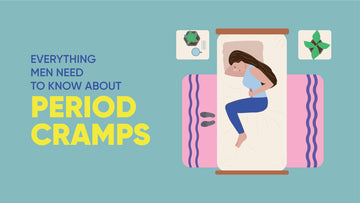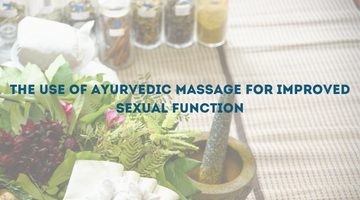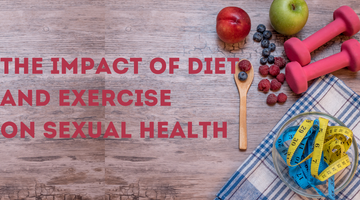
Periods have always been a subject that has been supposed to be talked about in whispers. Some women even today think of it as a process that is highly stigmatic. And men are far away from the reality of knowing what periods actually are. Our men ought to comprehend the normal physiological process that ladies need to go through. They should be empathic enough and understand that it’s not the person, but the hormones which play the brat.They should take up efforts to make them feel valued and loved, even at that time of the month. Your mother, wife, girlfriend or daughter needs to feel taken care of when they are feeling a lot of changes. Understanding how periods work and learning to separate facts from myths can go a long way in breaking the stigma that is associated with this topic.
How do you explain periods to men?
Menstruation, Tampons, Pads, Uterus, and Bleeding are just a few words amongst many others that explain the complex process of menstruation. But we will take it slow and explain it to you in a detailed manner, one thing at a time.
Top 5 period-related questions that Men never asked Women.
Here is what those without a uterus need to understand to get a better idea about the process
How do periods work?
The uterus develops a lining intended to nourish and protect a fertilized egg i.e, fetus, approximately every month. The fertilized egg attaches itself to the lining in order to grow. When pregnancy does not take place, that is a sperm does not fertilize the egg during a cycle, the lining is shed with tissue such as blood which is what in general terms is known as Menstruation or Normal Mensuration.
In short, No pregnancy means no need for uterine lining, therefore, bleeding each month.
How often is a menstrual cycle?
This differs from person to person but the normal cycle is between 23-35 days long. A menstrual period starts when the body eliminates the old uterus lining in the form of blood when the egg does not get fertilized. The menstrual cycle ends with the body preparing to get pregnant, which means releasing eggs from the ovary to be fertilized. Bleeding can last three to eight days with the heaviest bleeding or flow occurring on the first few days.
What is an abnormal menstrual cycle?
If the menstrual cycle is extremely long, heavy or painful, it is a sign of a medical condition known as endometriosis or polycystic ovary syndrome (PCOS). You are curious about PCOS, then read here in detail. If there is bleeding for more than seven days in a row or there is dizziness or severe pain, then you must consult a doctor.
What are premenstrual symptoms (PMS)?
Before a period starts each month, the individual notices certain symptoms. These symptoms are widely known as premenstrual syndrome (PMS) symptoms.
While food cravings and mood swings are portrayed as the key symptoms of an upcoming period, women experience all sorts of symptoms including cramps (ranging from mild to painful), acne breakouts, sore breasts, bloating, and diarrhea etc.
What are the symptoms of PMS ?
However, all of these symptoms are extremely common and normal.
-
Food cravings
In the weeks or days before the period starts, women may crave sweet and starchy foods. Before and during a period, hormone levels undergo fluctuations which leads to an imbalance of estrogen and progesterone, which causes cravings.
-
Cramps
Cramps are caused by contractions of the uterus, which occur when it sheds its lining. They are the most dramatic and painful part of having a period. Cramps can happen at any time of your cycle with different intensity, signaling towards ovulation or pre-menstrual cramps.
-
Mood changes
A lot of emotional changes can also be expected by someone dealing with the physical discomfort of a period. Additionally, changes in hormones may cause mood swings. It is believed that estrogen levels correspond to serotonin, the neurotransmitter associated with the mood, ultimately affecting a woman’s emotional state.
-
Pregnancy & period
For a better understanding of this complex cycle of periods and pregnancy, let us address some questions that come up in the mind of men while reading about periods.
What are the different sanitary products?
There are a lot of products available in the market to help a woman survive her period in as comfortable a way as possible. Pads, tampons, menstrual cups or period-proof underwear, all of these products are designed to serve different women with different preferences.
-
Tampons
Tampons are little rods with a string hanging from one end. They are generally made from cotton, rayon, or a mix of both. Tampons are single-use products. They are meant to be inserted into the vagina and last for about 4-8 hours.
-
Pads
Sanitary napkins or as they are commonly known as pads are worn in the underwear to absorb blood that comes out through the vagina. They come in different sizes that are based on the heaviness of one’s blood flow. Similar to tampons, these are also meant to be replaced after a few hours.
-
Menstrual cups
Menstrual cups or disks are a more sustainable period product compared to tampons and pads. These are little cup shaped products that are made of medical grade silicone. They are inserted into the vagina as they collect the blood. But unlike a tampon, menstrual cups can be left in the vagina for up to 12 hours after which they need to be emptied, cleaned, and reinserted. One menstrual cup can be used multiple times and can last around 10 years depending upon the usage.
-
Panty liners
Panty liners are very similar to pads as they are also worn in the underwear and collect blood that comes out of the vagina. The main difference between panty liners and pads is their size and absorption level. Panty liners are much smaller and thinner in size and thickness than a pad and cannot absorb as much.These are normally used in the starting few days of the menstrual cycle or at the very end of a period, when there is not a lot of menstrual flow to collect.
-
Period proof underwear
Period proof underwear is made of absorbent material, much like a pad. But there is no pad. It’s just underwear. They are meant to keep any absorbed liquid locked in so it does not ruin the individual's clothes. Once the underwear is worn for a certain amount of time (depending on type and amount of menstrual flow) they are supposed to be washed and used again.
To Summarise :
Having periods every month for at least 40 to 50 years is a big thing for a woman because it is a process that is uncomfortable and can be painful. Mood swings, hormonal changes and non-stop bleeding can turn someone into a completely different person. It is time that menstruation should be talked about openly and should not be a topic from which men often run away. It should be understood by men that women need their support and care at even this time of the month. Men should come forward to normalize periods.
How can Aadar help?
Aadar is an ayurvedic brand that is here to cater to all your needs and provide solutions to all your problems. For period and ovulation pain and cramps, Aadar’s Good period for happy cycles pills are the most effective. Made from herbs like Shatavari, Ashoka, Manjistha and turmeric, it has been proven effective by women who have used it. For regular, balanced & happy cycles, relief from pain and cramps, to optimize hormonal imbalance and to rejuvenate & strengthen you during the cycles, these capsules are our recommendations. This product is FSSAI certified and has been certified to have all-natural products. Taking 2 capsules each after breakfast and dinner will make you see the difference in yourself.
So hurry up and visit our website, www.aadar.co to have a look at this product and all the other women wellness products that we have to offer.
Frequently Asked Questions -
At what age does a girl have her first period?
Girls can get their first period between the ages of 10 and 15.This is normally a sign that they are getting close to the end of puberty.
What is toxic shock syndrome?
Toxic shock syndrome (TSS) is a rare yet fatal condition that comes from certain bacterial infections. TSS is mostly associated when someone leaves in a tampon for too long in the vagina. It can affect almost anyone as it is caused by toxins that come from Staphylococcus aureus (staph) bacteria.




